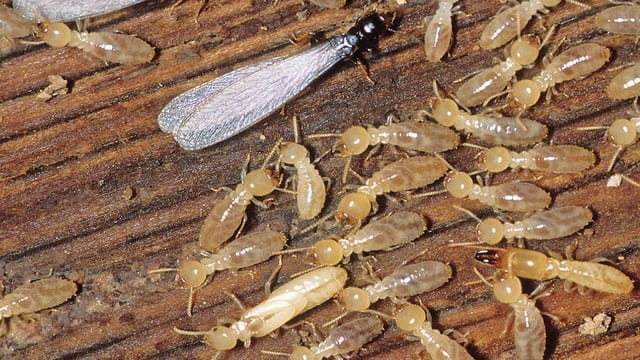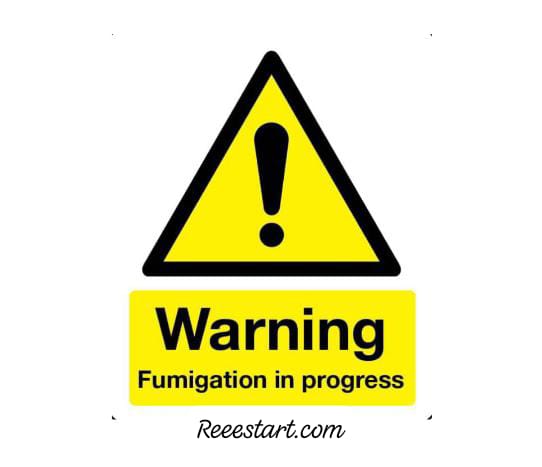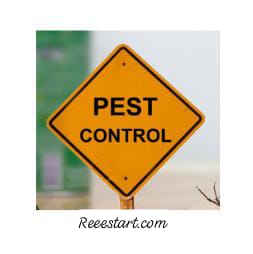In the bustling metropolis of Dubai, where modern architecture meets arid climate, ensuring the protection of your property from destructive pests like termites is crucial. Termites, though often unseen, can cause significant damage to the structural integrity of your building, leading to costly repairs and maintenance, Here, we will discuss the most Effective Anti-termite Treatment for External premises in Dubai.
Effective Anti-termite Treatment for External premises in Dubai
Given Dubai’s unique environmental conditions, effective termite control for external premises requires a meticulous and well-planned approach, This comprehensive guide outlines essential steps for safeguarding your property from termites.
From understanding the signs of infestation to implementing proactive treatments, this article will equip you with the knowledge needed to protect your home or business from these silent invaders. Discover how to effectively manage and prevent termite issues, ensuring long-term peace of mind and structural stability for your property in Dubai.
Anti-Termite Treatment for External Premises in Dubai
Effective anti-termite treatment for external premises involves several key steps:
Drilling and Treatment
- Drill the external walls of the building and columns using a drill bit of 30 cm (12 inches) length and 12 mm diameter, to a depth of 30 cm.
- For buildings with stilt construction, drill the side corners of the columns in the same manner.
- Fill the drilled holes with anti-termite chemicals.
Mud Tube Management
- If mud tubes are found, treat these channels with anti-termite chemicals and remove them completely.
Common Areas Treatment
- Drill all staircases, passage areas, and other common sections, then fill these with anti-termite control chemicals.
- Seal all treated areas with cement.
Maintenance and Prevention
- Regularly remove debris and ensure that there are no contacts between wood and soil.
- Address plumbing and roof leaks to prevent moisture, as termites thrive in damp conditions.
- Increase ventilation in basements and install rain gutters to mitigate moisture issues.
Documentation
- After each treatment, document and report all relevant data. This can be done manually or using data software.
Ensure to include the following details:
- Client/premises location and address.
- Client name.
- Type of workplace (e.g., bedroom, living room, etc.).
- Control team details (company name/personnel name).
- Service type (e.g., follow-up, treatment, or both).
- Date and time of service.
- Termite species identified.
- Date of the next scheduled service.
- Applied treatments.
- Locations where termites were detected.
- Details of the termiticide used, including name, formulation, quantity used, application method, dilution rate, and treated areas or objects
- Recommendations and instructions provided to the client
- Adhering to these procedures ensures comprehensive termite control and effective documentation for ongoing monitoring and maintenance.
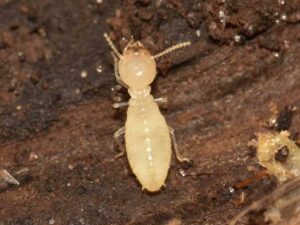
Signs and symptoms of termite infestation
Recognizing termite infestation in external premises involves observing various signs and symptoms. Here are the key indicators:
Mud Tubes
Termites build mud tubes on exterior walls, foundations, and other surfaces to protect themselves while traveling between their colony and food sources. These tubes are often visible as small, pencil-sized tunnels made of soil, wood particles, and saliva.
Wood Damage
- Look for wood that appears damaged, hollow, or blistered. Termites may consume the wood from the inside out, leaving a thin veneer on the surface.
- You may notice wooden structures with visible signs of decay or a hollow sound when tapped.
Swarmers
Winged termites, known as swarmers, are reproductive adults that leave the colony to establish new ones. Swarmers are often seen around light sources, especially during the spring or rainy season. Finding discarded wings near windows or on the ground is a sign of a termite swarm.
Termite Droppings
- Termite droppings, or frass, are small, pellet-like fecal matter that may be found near infested areas.
- These droppings are typically brown or black and can accumulate near wooden structures or soil.
Frass and Wood Shavings
Termites may leave behind wood shavings or frass, which can be found at the base of wooden structures or around the area where termites are feeding.
Cracked or Warped Wood
- Check for signs of moisture damage, such as warped, cracked, or buckled wood.
- Termites thrive in moist conditions and may cause wood to deform as they feed.
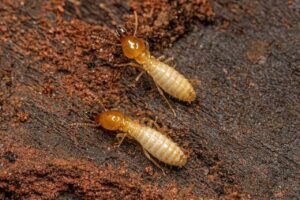
Paint Damage
Peeling or bubbling paint on wooden surfaces can be a sign of termite infestation. Termites can cause wood to become so damaged that the paint becomes detached.
Visible Termites
- Although less common, spotting termites themselves on external wood or soil surfaces can indicate an infestation. They are small, often pale or dark brown, and may be seen feeding on wood.
Soil Erosion
If you notice unusual soil erosion around the foundation of your building, it could be a result of termite activity undermining the soil.
Unusual Sounds
In some cases, you might hear a faint clicking or rustling sound coming from inside wooden structures or walls, which can be an indication of termites at work.
Regular inspections and monitoring are essential for early detection and management of termite infestations.

